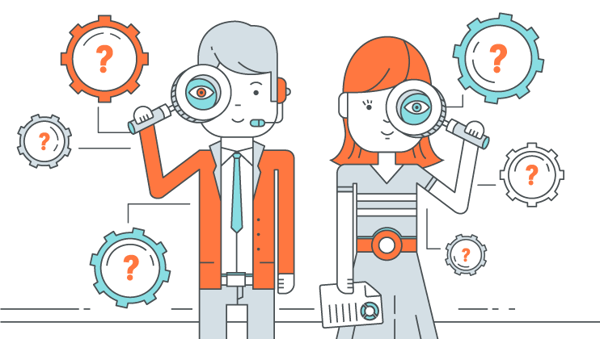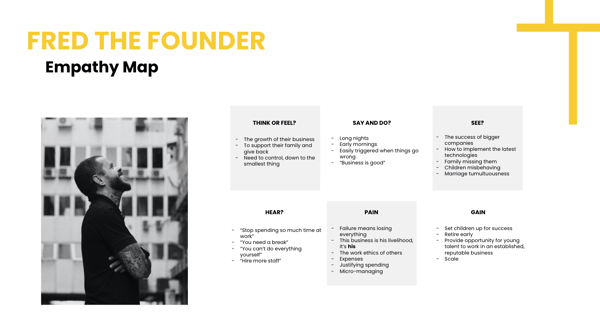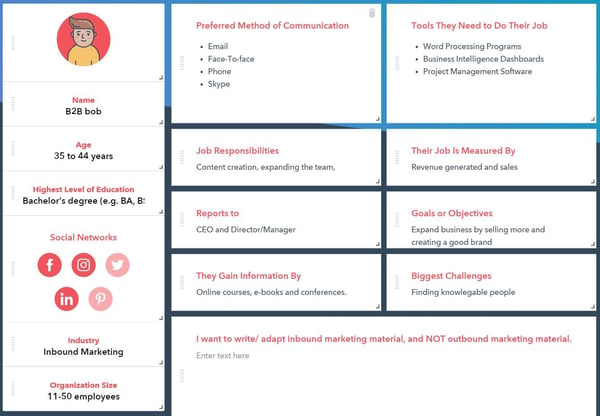Looking for the key to a successful marketing strategy? While many spend their time manically rummaging through the chest of budgets or blindly trying to unpick the lock of branding, the real treasure sits with the lid wide open ... buyer personas! Buyer persona development is absolutely essential for your marketing efforts to succeed - regardless of the size of your business or the type of industry.
Why? Well, if you know what your customers want, you can serve them exactly that, and then ultimately - boost your sales!
So, what is buyer persona development, and why is it important? Enter stage left: the following guide! This blog will not only help you answer these questions, but also show you how to implement them in your marketing strategy! Let’s start with the basics.
What is a Buyers Persona?
A buyer persona is essentially a model of your ideal customer, represented through detailed descriptions and characteristics. While you might base your persona on a GODLY, made-your-day, “Why can’t they all be like them?”- type customer, in a general sense, they’re built on data-backed pretence.
A buyers persona allows you to paint a picture of the demographics, interests, and characteristics that represent your top consumers; as well as their pain points, goals, buying patterns, likes, and dislikes.
While your buyer persona might not be a real person, you need to treat them like they are. Ask yourself questions like, what type of content might they engage with the most? What problems might they need to solve, and how might we help them?
You should give them a name and link demographic details to the description, and give them a face through the help of handy Stock photos!
There is no limit to how many buyer personas your business can have. Think about your customer base - there are likely several different types of people that use your products and support your brand, so be sure to create a customer persona for each one.
For most businesses, it is estimated that three to four personas account for over 90% of their sales. You can't understand every single customer individually, so focus on segments of your business that drive the most revenue and sales.
Buyer Persona Development
There are several steps involved with creating buyer personas. Let’s run through each of them so your personas are accurate and factual!
1. Conduct your Research
While you might think you know everything about your top customers, thorough research is required to create a buyer persona. Utilise real-world data like age, location, household income, and spending patterns as you develop your buyer personas.
You can obtain all of this information through social media analytics, your existing customer database, and by interviewing your top clients.
For example, it’s essential to learn which social channels your target audience uses the most so that you can reach them in the right place. Learn where they are already spending time online through tools like Google Analytics, Hootsuite Insights, and Keyhole.co.
You can also take cues from what your competitors are doing - what content do they have that customers seem to engage with? Are there any patterns with hashtags or the types of posts that are successful?

2. Identify the Customer’s Challenges – and Goals
Once you know who your buyer persona is, you need to identify their pain points. What challenges are they trying to overcome, and what might be holding them back from succeeding?
Engage with them on social media and read reviews. This is a fool-proof way to pinpoint what they are stoked with and what they might like to see changed or improved. Collaborate closely with your customer service teams in this stage of buyer persona development - they’re on the front-line with your customers every day, so they’ll sure as hell know a thing or two! They can give you an idea of what questions are asked most frequently and any patterns relating to the challenges the buyer persona has.
Understanding the buyer persona's goals and aspirations are also necessary. This knowledge will help you identify what is motivating your customers to purchase your products - you should also look at goals that don't directly relate to your product features since the objective is to truly understand the customer.
Utilise social listening so that you can identify buyer objections, what their end game is, and how you can help.
An empathy map is the perfect place to start in understanding the needs of customers more accurately. Like cheese to wine, empathy maps are a natural accompaniment to a buyer persona! Check out below and example of an empathy map for Neighbourhood, that was created during our own buyer persona workshop.

3. Describe How Your Brand Can Help
Now that you’ve got to grip with the buyer persona’s demographics, challenges, and aspirations, you will have to dig deep to analyse how your brand can help them.
This has to go further than simply describing product features - how will your product make your persona’s life better?
4. Create the Buyer Persona
The last step in the buyer persona development process is to tie everything together in a neat little bow and create the damn thing.
Give them a name, location, other defining characteristics that will make them seem like a real person. For example, you may have a buyer persona named Jessie, who is a mum in her 30’s and loves to be active outdoors.
Don't forget the pain points when writing out the description. Does she have trouble keeping her schedule organised? Or is her challenge finding the motivation to get to the gym? What is her lifestyle like?
Imagine that you are filling out their dating profile, or … trying to profile a criminal? While the latter might be a little too ‘Forensic Files’ for this activity, all I really need you to remember is that creating this buyer persona means you’re marketing to a human being, not a statistic.

How Can Buyer Personas Be Used in Marketing?
Since your buyer persona represents the customer that provides you with the most revenue - and the least amount of opposition - over a long period, utilising this in your marketing strategy will have you reaping the rewards.
In fact, 71% of companies who can exceed their revenue and lead goals utilised buyer personas. This is a battle-tested way to use a marketing campaign to grow your business and connect with your target audience!
You can further personalise your marketing efforts by utilising buyer personas. Research has found that personalised emails are 26% more likely to be opened than generic ones; a tactic we also recommend you apply to your content marketing efforts!
So that’s it! No matter what kind of marketing you do, who your audience is, what you sell or how you operate - buyer personas matter! Using this article as your blueprint, you’re set to know what your customers want, and how you can best serve them to increase your sales!


